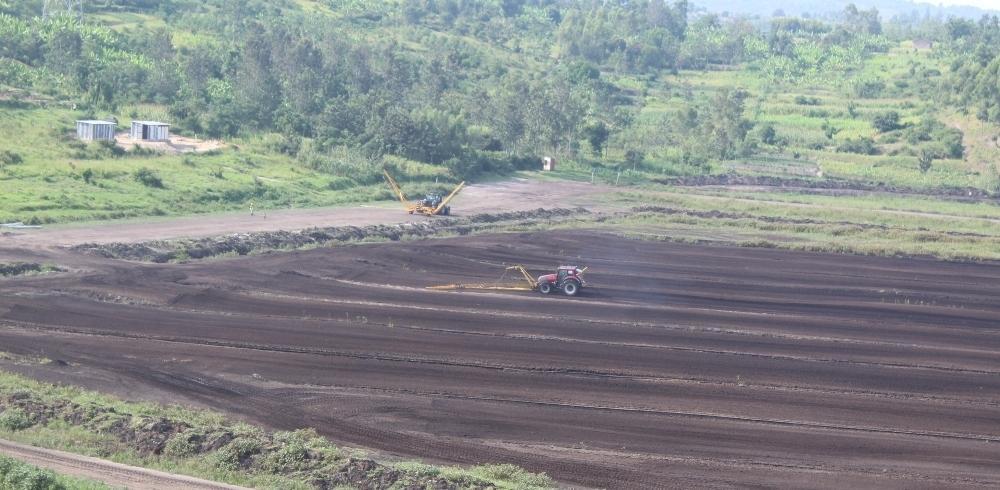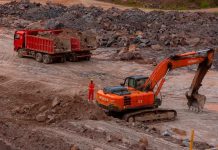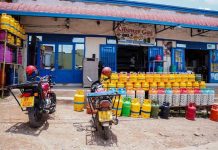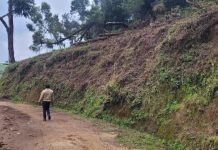Africa-Press – Rwanda. The government is preparing to restore ‘degraded’ peatlands across the country so that they can regain their capacity to act as carbon sinks [capacity to reduce greenhouse gas emissions in the atmosphere] as a way of mitigating climate change and building adaptation to its effects.
The decision follows an assessment, which found that their degradation is significantly contributing to the global warming gases, according to Thadée Twagirimana, Director General of Environment and Climate Change at the Ministry of Environment (MoE).
He was responding to a Member of Parliament who suggested replicating the projects rehabilitating degraded wetlands in Kigali City in other parts of the country.
A peatland is a type of wetland whose soils are composed of organic matter from decaying plants, forming layers of peat, locally known as ‘Nyiramugengeri’.
Peat is a brown, soil-like deposit formed by the partial decomposition of plant material under wet, acidic conditions. It is often cut and dried for use as fuel.
In addition to being home to unique plant and animal species and playing a role in water regulation, peatlands are recognised as vital carbon sinks, trapping large amounts of carbon and helping to reduce emissions that drive climate change.
However, due to degradation caused by drainage for agriculture and other uses, peatlands are losing their capacity to trap carbon, Twagirimana said.
Draining peatlands for subsistence agriculture is one of the major causes of their degradation.
These activities are also contributing to a steady decline in the extent and quality of peatlands in Rwanda.
“Last year, we carried out an assessment of peatland management and found that they are emitting greenhouse gases at a high level, contributing to global warming and climate change. This is due to degradation, largely caused by agricultural exploitation,” he explained.
According to the International Union for Conservation of Nature (IUCN), damaged peatlands contribute around 10% of greenhouse gas emissions from the land use sector.
Carbon emissions from drained peatlands are estimated at 1.3 gigatonnes annually.
“We have conducted the assessment and are now at the stage of performing a cost-benefit analysis: identifying which alternative projects can be sustainably implemented in peatlands, how farmers who previously relied on them can benefit, how the government can benefit, and what measures are needed to ensure sustainable management. The study, funded by GIZ, aims to reduce emissions from peatlands through sustainable management,” Twagirimana added.
If not degraded, peatlands are recognised by the Intergovernmental Panel on Climate Change (IPCC) as the most efficient carbon sinks in the world.
Though they cover only about 3% of the Earth’s land surface, they store approximately 30% of the world’s soil carbon and provide invaluable ecosystem services to both the environment and society.
A study on Rwanda’s peat resources indicates that the country holds up to 155 million tonnes of dry peat across a combined area of 50,000 hectares.
Most of this peat is located in the south and south-west of the country.
Approximately 77% of Rwanda’s peat reserves are situated near the Akanyaru and Nyabarongo rivers and the Rwabusoro Plains.
Paludiculture and carbon credit opportunties
The GIZ-financed project commissioned a study to provide a ‘paludiculture scenario’ analysis, offering recommendations for the agricultural sector to ensure productivity and sustainable livelihoods while also conserving peatlands.
Paludiculture refers to the productive use of wet or re-wetted peatlands that preserves the peat soil, thereby minimising carbon emissions and land subsidence.
This project aims to provide a sustainable alternative to drainage-based agriculture, maintaining the carbon storage potential of peatlands.
The study also seeks to develop a sustainable management framework for peatlands and assess the associated costs and benefits.
Another component of the analysis focuses on carbon credits and biodiversity credits.
The project will evaluate Rwanda’s potential for engaging in carbon markets through peatland restoration and conservation, and will investigate possible biodiversity crediting mechanisms to support long-term sustainable peatland management, informing national decision-makers.
Carbon markets are trading systems in which carbon credits (representing tonnes of reduced or avoided emissions) are bought and sold.
Companies or individuals can use these markets to offset their greenhouse gas emissions by purchasing credits from entities or countries that reduce or remove emissions.
Rwanda has considerable potential for a variety of carbon market projects, aligned with its ambition to become a developed, carbon-neutral, and climate-resilient economy by 2050.
Examples of such projects include reforestation, renewable energy initiatives, improved cookstove programmes, and wetland conservation efforts that reduce greenhouse gas emissions. According to experts, wetlands absorb carbon emissions at a rate three times greater than that of forests.
Herman Hakuzimana, Director of Climate Change and International Obligations at the Rwanda Environment Management Authority (REMA), said a national carbon market framework has been released to help developers design projects and trade carbon credits.
Rwanda currently has 19 projects ready to participate in international carbon markets as a way of mobilising climate finance, according to REMA.
For More News And Analysis About Rwanda Follow Africa-Press






